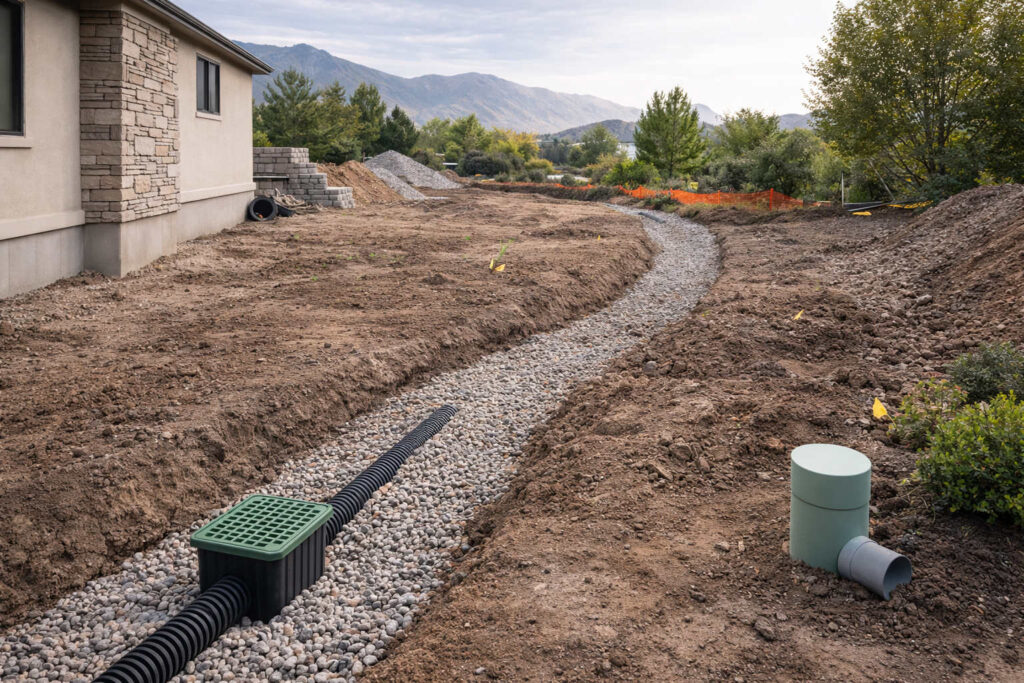A beautiful, healthy lawn requires more than just regular mowing and fertilizing; it needs proper lawn irrigation and watering practices. Effective lawn irrigation ensures that your grass receives the right amount of water at the right time, promoting deep root growth and overall lawn health. In this comprehensive guide, we’ll delve into expert insights on the importance of proper lawn irrigation and watering practices, offering practical tips to help you maintain a lush, green lawn while conserving water.
Understanding the Basics of Lawn Irrigation Proper lawn irrigation involves delivering the right amount of water to your grass to support healthy growth. Overwatering or underwatering can lead to a range of issues, from shallow root systems to disease and pest problems. Understanding the basics of lawn irrigation is essential for maintaining a vibrant, resilient lawn.
The Benefits of Proper Lawn Irrigation Effective lawn irrigation offers numerous benefits, including:
- Healthier Grass: Proper watering promotes deep root growth, resulting in a more resilient and drought-tolerant lawn.
- Reduced Water Waste: Efficient irrigation practices help conserve water, reducing your environmental footprint and lowering water bills.
- Improved Disease Resistance: Well-irrigated lawns are less susceptible to diseases and pests, leading to a healthier, more attractive lawn.
- Enhanced Appearance: Consistent, proper watering ensures your lawn remains lush, green, and visually appealing.
Determining Your Lawn’s Water Needs Every lawn is unique, and its water needs can vary based on factors such as grass type, soil composition, and local climate. To determine your lawn’s specific water requirements:
- Identify Your Grass Type: Different grass species have varying water needs. Cool-season grasses like Kentucky bluegrass and fescue generally require more water than warm-season grasses like Bermuda and zoysia.
- Assess Soil Type: Soil composition affects water retention and drainage. Sandy soils drain quickly and may need more frequent watering, while clay soils retain moisture longer and require less frequent watering.
- Consider Local Climate: Climate conditions, including temperature, humidity, and rainfall, influence your lawn’s water needs. Hot, dry climates typically require more irrigation than cooler, wetter regions.
Efficient Lawn Irrigation Techniques
Drip Irrigation Systems Drip irrigation systems deliver water directly to the roots of plants, minimizing evaporation and runoff. This method is highly efficient and ideal for garden beds, shrubs, and trees. Drip lines or soaker hoses ensure your plants receive consistent moisture with minimal water waste.
Sprinkler Systems Sprinkler systems are a popular choice for lawn irrigation. To maximize efficiency:
- Use Pop-Up Sprinklers: Pop-up sprinklers deliver water close to the ground, reducing evaporation and wind drift.
- Opt for Rotary Nozzles: Rotary nozzles distribute water more evenly and at a slower rate than traditional spray heads, improving water absorption.
- Adjust Sprinkler Heads: Ensure sprinkler heads are properly adjusted to avoid watering sidewalks, driveways, and other non-landscape areas.
Smart Irrigation Controllers Smart irrigation controllers adjust watering schedules based on real-time weather data, soil moisture levels, and plant water needs. These systems optimize water usage, ensuring your lawn receives the right amount of water at the right time.
Best Practices for Lawn Watering
Water Deeply and Infrequently Deep, infrequent watering encourages deep root growth, making your lawn more drought-resistant. Aim to water your lawn thoroughly but less frequently, providing about 1 to 1.5 inches of water per week, including rainfall.
Water Early in the Morning Watering your lawn in the early morning reduces evaporation and allows the grass to dry before evening, preventing fungal growth and disease. Avoid watering during the hottest part of the day or late in the evening.
Use a Rain Gauge Monitor rainfall and adjust your watering schedule accordingly. A rain gauge helps ensure you are not overwatering your lawn and can provide insights into your lawn’s natural water intake.
Avoid Overwatering Overwatering can lead to shallow root systems, increased disease susceptibility, and nutrient leaching. Ensure you are providing the right amount of water for your lawn’s needs and adjust based on weather conditions and soil type.
Maintaining Your Irrigation System
Regular Inspections Regularly inspect your irrigation system for leaks, clogs, and other issues. Address any problems promptly to ensure your system operates efficiently and effectively.
Seasonal Adjustments Adjust your irrigation schedule based on seasonal changes. For example, reduce watering during cooler months and increase it during hot, dry periods.
System Upgrades Consider upgrading your irrigation system with modern, water-efficient components. Smart controllers, moisture sensors, and high-efficiency nozzles can significantly improve water usage and lawn health.
Long-Term Water Conservation Strategies
Implement Mulching Mulching helps retain soil moisture, regulate temperature, and suppress weed growth. Apply a layer of organic mulch around your plants to reduce the need for frequent watering.
Choose Drought-Tolerant Grass Species Selecting drought-tolerant grass species can reduce your lawn’s water requirements. Varieties such as Bermuda grass, zoysia grass, and buffalo grass are well-suited for dry climates and require less frequent irrigation.
Consider Xeriscaping Xeriscaping involves designing landscapes with water-efficient plants and minimal turf areas. Incorporate native, drought-tolerant plants and reduce lawn areas to conserve water while maintaining an attractive landscape.
Educate Your Community Promote water conservation practices within your community by sharing your knowledge and experiences. Encourage neighbors and local organizations to adopt proper lawn irrigation techniques and participate in conservation efforts.
Proper lawn irrigation and watering practices are essential for maintaining a healthy, lush lawn while conserving water. By understanding your lawn’s specific water needs, implementing efficient irrigation techniques, and following best practices for watering, you can achieve a beautiful, resilient lawn. Embrace these expert insights and long-term conservation strategies to ensure your lawn remains vibrant and sustainable year-round.
”);


